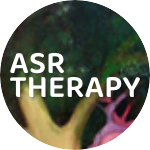Reference reading and citations
Ainsworth, S., Blehar, M.C., Waters, E., & Wall, S. (1978).
Patterns of attachment. Hillsdale, NJ: Erlbaum.
Adams, K. M., Gilman, S., Koeppe, R., Kluin, K., Junck, L., Lohman, M., Johnson-Greene, D., Berent, S., Dede, D., & Krol, P. (1995). Correlation of neuropsychological function with cerebral metabolic rate in subdivisions of the frontal lobes of older alcoholic patients measured with (18F) flourodeoxyglucose and positron emission tomography. Neuropsychology, 9, 275-280.
Alateen members & Sponsers. (1996). Courage to be me: Living with alcoholism.
Virginia: Al-Anon Family Group Headquarters, Inc.
Alcoholics Anonymous. (2005). 2004 membership survey. New York: Alcoholics Anonymous World Services.
Anonymous. (1970). Alcoholics Anonymous Grapevine: Our meeting in print. New York: the AA Grapevine, Inc.
Anonymous. (2001). Alcoholic Anonymous: The story of how many thousands of men and women have recovered from alcoholism (4th ed.). New York: Alcoholics Anonymous World Services.
Anonymous. (2002). Hope for today. Virginia: Al-Anon Family Group Headquarters, Inc.
Bowlby, J. (1973). Attachment and loss: Vol. 2. Separation, anxiety and anger. New York: Basic Books.
Bowlby, J. (1978). Attachment theory and its therapeutic implications. In S. C. Feinstein & P. L. Giovacchini (Eds.), Adolescent psychiatry: Developmental and clinical studies. Chicago: University of Chicago Press.
Bowlby, J. (1979). On knowing what you are not supposed to know and feeling what you are not supposed to feel. Canadian Journal of Psychiatry, 24, 403-408.
Cameron, O. G. (2001). Interoception: The inside story: A model for psychosomatic processes. Psychosomatic Medicine, 63, 697-710.
Cook, A., & Blaustein, M., & Spinazzola, J., & van der Kolk, B. A. (2003). Complex trauma in children and adolescents. White paper, National Child Traumatic Stress Network, Complex Trauma Task Force. Retrieved March 6, 2007, from http://www.nctsn.org/nccts/nav.do?pid=hom_main
Donovan, B., Padin-Rivera, E., & Kowaliw, S. (2001). “Transcend”: Initial outcomes from a post-traumatic stress disorder substance abuse treatment program. Journal of Traumatic Stress, 14(4), 757-772.
Gold, S. N., Elhai, J. D., Rea, B. D., Weiss, D., Masino, T., Morris, S. L., & McInich, J. (2001). Contextual treatment of dissociative identity disorder: Three case studies.Journal of Trauma & Dissociation, 2, 5-35.
Grotstein, J. S. (1986). The psychology of powerlessness: Disorders of self-regulation and interactional regulation as a newer paradigm for psychoathology. Psychoanalytic Inquiry, 6, 93-118.
Guay, S., Billette, V., & Marchand, A. (2006). Exploring the links between post-traumatic stress disorder and social support: Processes and potential research avenues. Journal of Traumatic Stress, 19(3), 327-338.
Jacobson, L. K., Southwick, S. M., & Kosten, T. R. (2001). Substance use disorders in patients with post-traumatic stress disorder: A review of the literature. American Journal of Psychiatry, 158, 1184-1190.
Liotti, G. (2006). A model of dissociation based on attachment theory and research. Journal of Trauma & Dissociation, 7(4), 55-74.
Liotti, G., Mollon, P., & Miti, G. (2005). Dissociative disorders. In G. Gabbard, J. Beck & J. Holmes (Eds.), Oxford textbook of psychotherapy (pp. 205-213). Oxford, England: Oxford University Press.
Main, M., & Solomon, J. (1986), Discovery of an insecure-disorganized/disoriented attachment pattern: Procedures, findings and implications for the classification of behavior. In T. B. Brazelton & M. W. Yogman (Eds.), Affective development in infancy (pp. 95-124). Norwood, NJ: Ablex.
Main, M., & Solomon, J. (1990). Procedures for identifying infant strange situation behavior: Phenotypic resemblance to dissociative states. In L. Michelson & W. Ray (Eds.), Handbook of dissociation (pp. 107-137). New York: Plenum Press.
McLaughlin, J. (2000). The use of the dyadic affective-state relationship (ASR) in the treatment of the post-traumatic stress disordered adult molested as a child. Retrieved March 6, 2007, from http://www.traumatic -stress .org
Ogden, P., & Minton, K. (2000). Sensorimotor psychotherapy: One method for processing traumatic memory. Traumatology, 6(3), 1-28.
Quimette, P., Moos, R. H., & Finney, J. W. (2003). PTSD treatment and five-year remission among patients with substance use and post-traumatic stress disorders. Journal of Consulting and Clinical Psychology, 71(2), 410-414.
Schore, A. N. (2003). Affect regulation and the repair of the self. New York: W. W. Norton.
Semple, W.E., Goyer, P., McCormick, R., Morris, E., Comptom, B., Berridge, M., Miraldi, F., & Shultz, S. C. (1992). Increased Orbital frontal cortex blood flow and hippocampal abnormality in PTSD: A pilot PET study. Biological Psychiatry, 31, 129A
Siegel, D. J. (2007). The mindful brain: Reflection and attunement in the cultivation of well-being. New York: W. W. Norton. van der Kolk, B. A. (2006). Clinical implications of neuroscience research in PTSD. Annals of the New York Academy of Science, 1071, 277-293.
van der Kolk, B. A., & Fisler, R. E. (1994). Childhood abuse and neglect and loss of self- regulation. Bulletin of the Menninger Clinic, 58, 145-168.
van der Kolk, B. A., Pelcovitz, D., Roth, S., Mandel, F. S., McFarlane, A., & Herman, J. L. (1996). Dissociation, somatization, and affect deregulation: The complexity of adaptation to trauma. The American Journal of Psychiatry, 153, 84-93.
